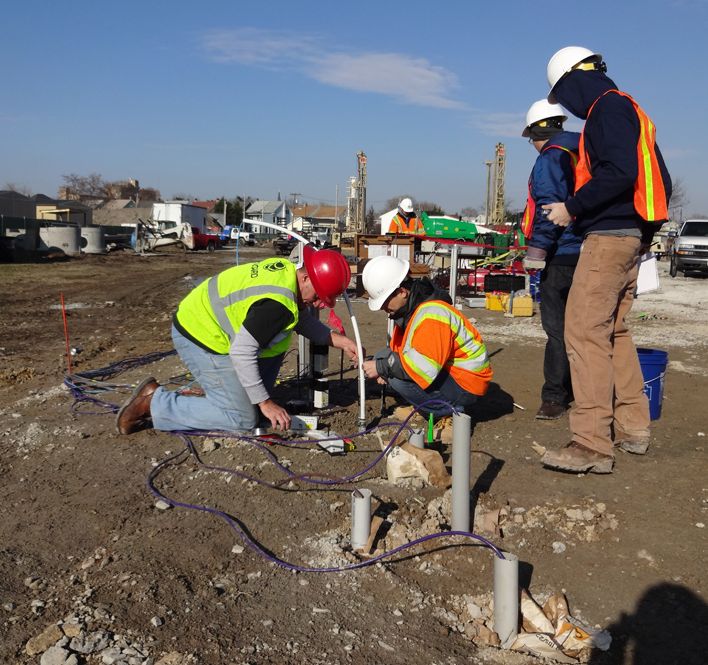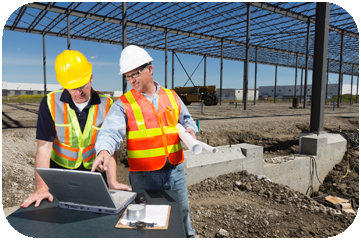Project Geotechnical Engineer Proficiency for Large-Scale Developments
Project Geotechnical Engineer Proficiency for Large-Scale Developments
Blog Article
Exactly How Consulting Engineers Enhance Geotechnical Engineering Projects: Insights Into Their Expertise, Approaches, and Collaborative Approaches
Consulting designers are crucial in enhancing geotechnical design tasks, applying their specialized understanding to browse the intricacies of subsurface conditions. Their collective techniques foster interaction among diverse job stakeholders, inevitably shaping the project's trajectory.
Function of Consulting Engineers
The experience of speaking with designers in geotechnical design is basic to the effective execution of construction jobs. These specialists play a pivotal role in examining dirt and rock homes, which are essential factors influencing design and building decisions. By carrying out complete website examinations, getting in touch with designers collect crucial information that notifies the layout process, making certain jobs are improved stable and ideal ground.
Consulting engineers likewise supply very useful understandings right into danger administration (geotechnical geologist). They recognize prospective geotechnical dangers, such as landslides, soil liquefaction, and settlement issues, enabling stakeholders to apply efficient reduction methods. Their know-how help in enhancing foundation layouts, which can bring about considerable expense savings and boosted security
Additionally, speaking with engineers function as a crucial link in between job owners, engineers, and service providers. Their capability to translate intricate geotechnical data into workable suggestions fosters cooperation and assists in informed decision-making throughout the task lifecycle. This multidisciplinary method not just improves project effectiveness but additionally guarantees conformity with regulative standards and finest practices.
Secret Methodologies in Geotechnical Design

One key methodology is site investigation, which includes carrying out area examinations and research laboratory evaluations to collect information on subsurface conditions. Techniques such as Criterion Infiltration Testing (SPT) and Cone Penetration Testing (CPT) are extensively utilized to evaluate soil stratigraphy and strength. Additionally, geophysical methods, including seismic and electrical resistivity surveys, provide non-invasive means to evaluate subsurface qualities.
One more vital method is mathematical modeling, which allows engineers to mimic various scenarios and predict how soil-structure interactions will certainly behave under various loading problems. Limited Aspect Analysis (FEA) is a common approach used in this context.
In addition, the style of foundations, keeping structures, and earthworks counts greatly on these methods - geotechnical geologist. By integrating advanced logical devices with field data, getting in touch with designers can establish customized remedies that attend to certain project obstacles, inevitably adding to the stability and safety and security of building projects
Relevance of Dirt Analysis
Soil evaluation functions as a foundational component in geotechnical engineering, giving necessary insights into the physical and chemical residential or commercial properties of dirt necessary for efficient construction preparation. Recognizing soil features is essential for establishing its load-bearing capacity, drain actions, and potential for settlement or instability. Thorough soil investigations, consisting of tasting and laboratory screening, aid identify specifications such as dirt kind, moisture material, thickness, and shear toughness.
These analyses inform the choice of ideal construction techniques and materials, inevitably affecting project safety and durability. Cohesive soils may require different foundation styles compared to granular soils, requiring customized design options. In addition, click site dirt evaluation help in recognizing impurities that can pose risks to human health or the environment, permitting the advancement of reduction methods.
Incorporating dirt evaluation right into the beginning of task growth aids to lessen unanticipated difficulties, guaranteeing that engineers can prepare for and resolve prospective issues before they rise. By developing a detailed understanding of the site conditions, speaking with designers can maximize style efficiency and lower expenses, thus boosting the general success of geotechnical engineering tasks.
Collective Methods in Tasks
Effective geotechnical projects usually rest on collaborative strategies that bring together varied experience from different her latest blog disciplines. Efficient collaboration amongst speaking with designers, geologists, ecological scientists, and building and construction experts is essential for resolving complicated obstacles and enhancing task outcomes. By leveraging the one-of-a-kind skills and understanding of each staff member, tasks can gain from an alternative understanding of the website conditions, governing requirements, and engineering restraints.
Regular communication and interdisciplinary conferences facilitate the sharing of insights and cultivate a culture of team effort. These collective efforts allow the identification of possible risks early in the project lifecycle, enabling for prompt mitigation strategies. Including comments from stakeholders, consisting of neighborhood areas and regulatory agencies, guarantees that all point of views are thought about, boosting task approval and conformity.
In addition, the assimilation of advanced technologies, such as Geographic Information Systems (GIS) and Building Information Modeling (BIM), further enhances collaboration. These tools allow for the real-time sharing of data and visualization of geotechnical conditions, advertising educated decision-making. Inevitably, a joint strategy not just simplifies task implementation however likewise lays the foundation for innovative solutions to complex geotechnical design obstacles.
Influence on Job Results

Consulting engineers use advanced methods such as risk evaluation and anticipating modeling, which enhance the precision of task forecasts. Their capability to incorporate innovative modern technologies, like geotechnical instrumentation and data analytics, even more improves the design and building procedures. Therefore, jobs experience enhanced efficiency, reduced costs, and minimized delays.
In addition, cultivating reliable communication and partnership amongst employee improves analytical capacities. When challenges occur, an unified front permits speedy recognition of solutions, avoiding prospective troubles. Inevitably, the collaborative initiatives of consulting designers add to better end results, ensuring that projects meet both regulatory requirements and client expectations.
Conclusion

Report this page